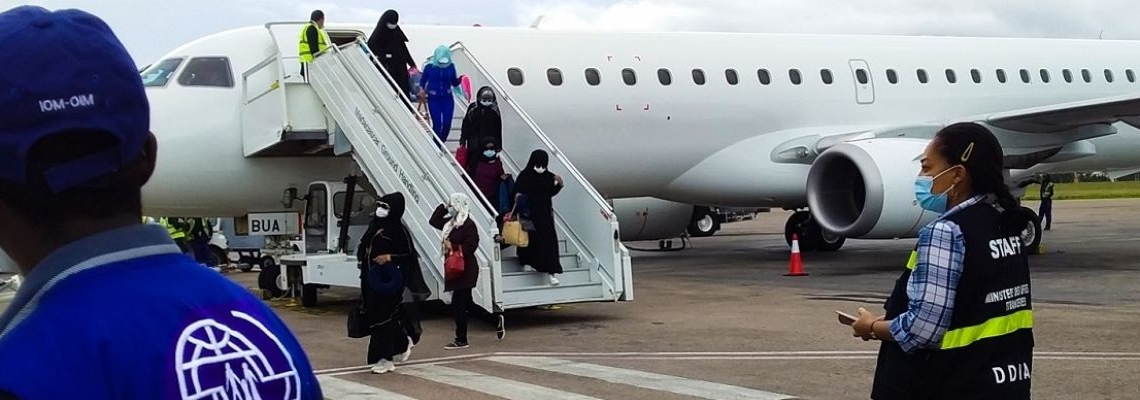IOM Vision
IOM Madagascar strives to ensure that migration within, from and to Madagascar is a choice and not a necessity. The Organization works closely with the government to provide direct assistance to migrants, address issues forcing populations to migrate as well as reduce tensions arising in communities of destination.
Objective
Saving lives and protecting people on the move
|
|
IOM Madagascar’s protection activities will seek to address the protection needs of crisis affected/at-risk populations, including vulnerable migrants, IDPs, victims of trafficking (VoT) and migrant smuggling by:
|
IOM Madagascar will provide mental health and psychological support services to crisis affected populations, including through:
-
Provision of mental health and psychological support services to crisis affected individuals, including through group and individual therapy sessions with psychologists provided directly or via referral.
-
Provision of MHPSS at community-/family level, including sociorelational activities, such as sport and play activities, creative and art-based activities, cultural activities and events, and so on.
|
IOM will deliver life-saving humanitarian WASH services to affected populations including through:
|
|
IOM will deliver life-saving humanitarian CCCM services to affected populations including through:
|
|
IOM will support the immediate needs of the displaced populations through the provision of shelter assistance, but also address the needs towards transitional shelter solutions. Activities will include:
|

Objective
Driving solutions to displacement
|
IOM will support the Malagasy government by implementing activities in the areas of resilience including peacebuilding and peace preservation, and community stabilization, targeting:
|
|
|
Objective
Strengthen preparedness and reduce disaster risk
|
IOM will work in the areas of health components of preparedness and risk reduction, points of entry, and emergency preparedness, targeting:
|
|
IOM will continue to assist the Government of Madagascar to prepare for seasonal outbreaks of plague, and contribute to efforts to control its spread along internal mobility corridors by:
|
|
IOM will build upon its efforts to promote the implementation of International Health Regulations (IHR) standards and improve the capacity of personnel at points of entry (PoE), while addressing existing challenges, by:
|
|
To support preparedness efforts on future forced displacement caused by disasters such as drought and cyclones, IOM will support national and regional stakeholders with the skills, tools, and expertise to manage episodes of forced displacement in line with humanitarian response standards and principles by:
|
Objective
Contribute to an evidence-based and efficient crisis response system
|
IOM will conduct Displacement Tracking Matrix (DTM) activities, including population mobility monitoring for health crises, internal mobility monitoring for crisis-affected populations, and regular rapid multi-sector assessments of locations where large numbers of IDPs or internal migrants are relocating, providing mobility-related data to:
|
|
Madagascar
The map used here is for illustration purposes only. Names and boundaries do not imply official endorsement or acceptance by IOM.
Figures are as of 31 December 2023. For more details of IOM's operational capacity in country, please see the IOM Capacity section.









